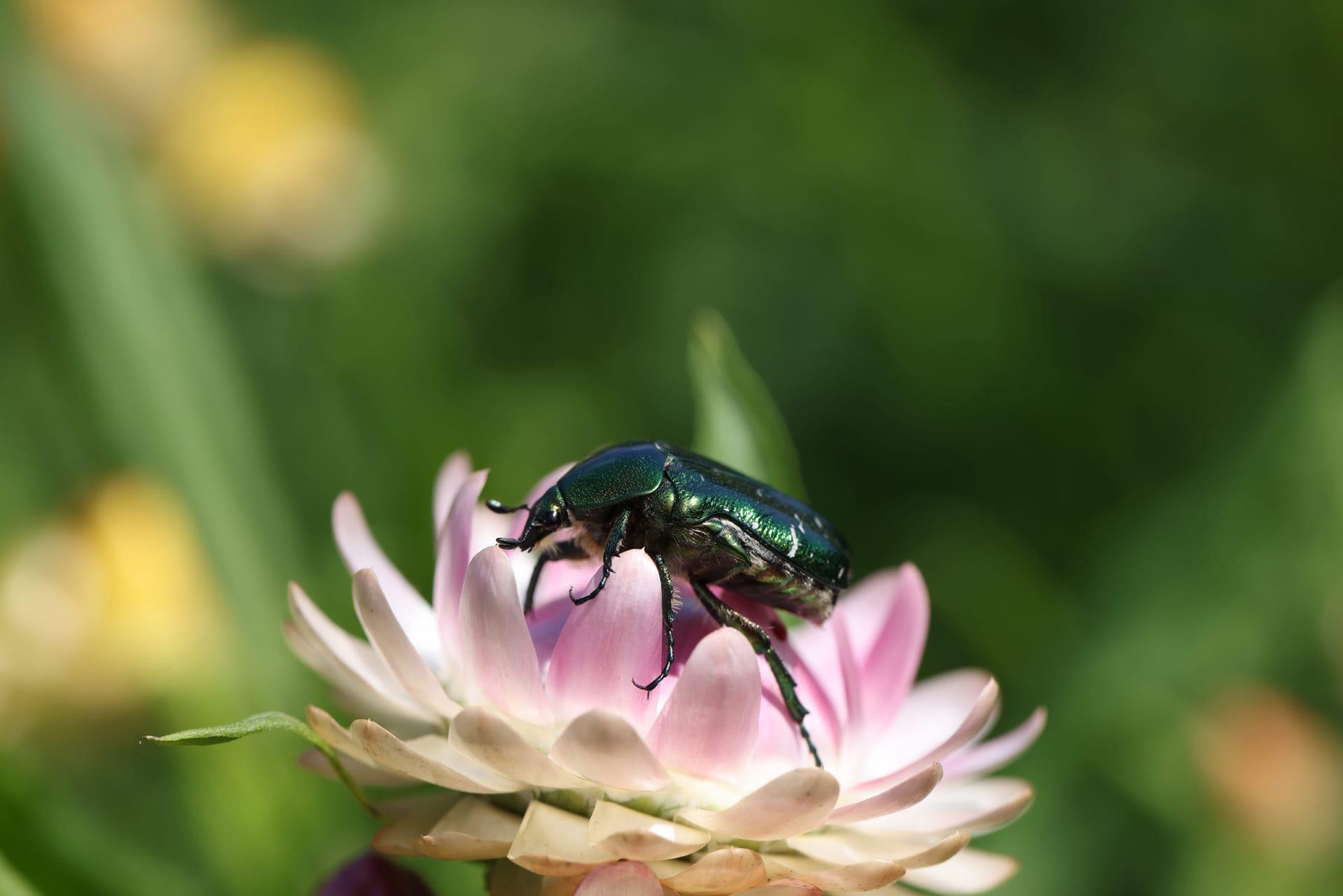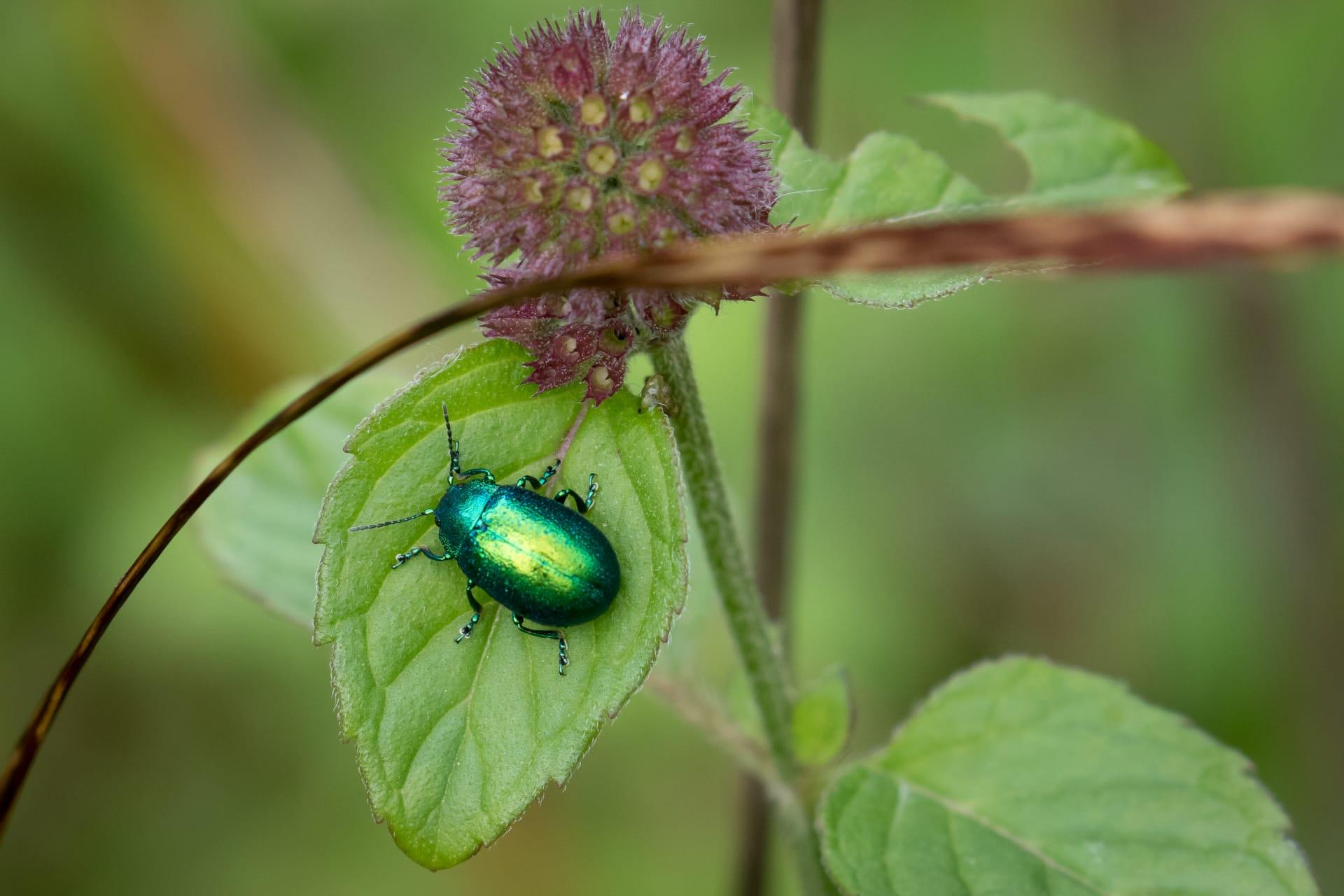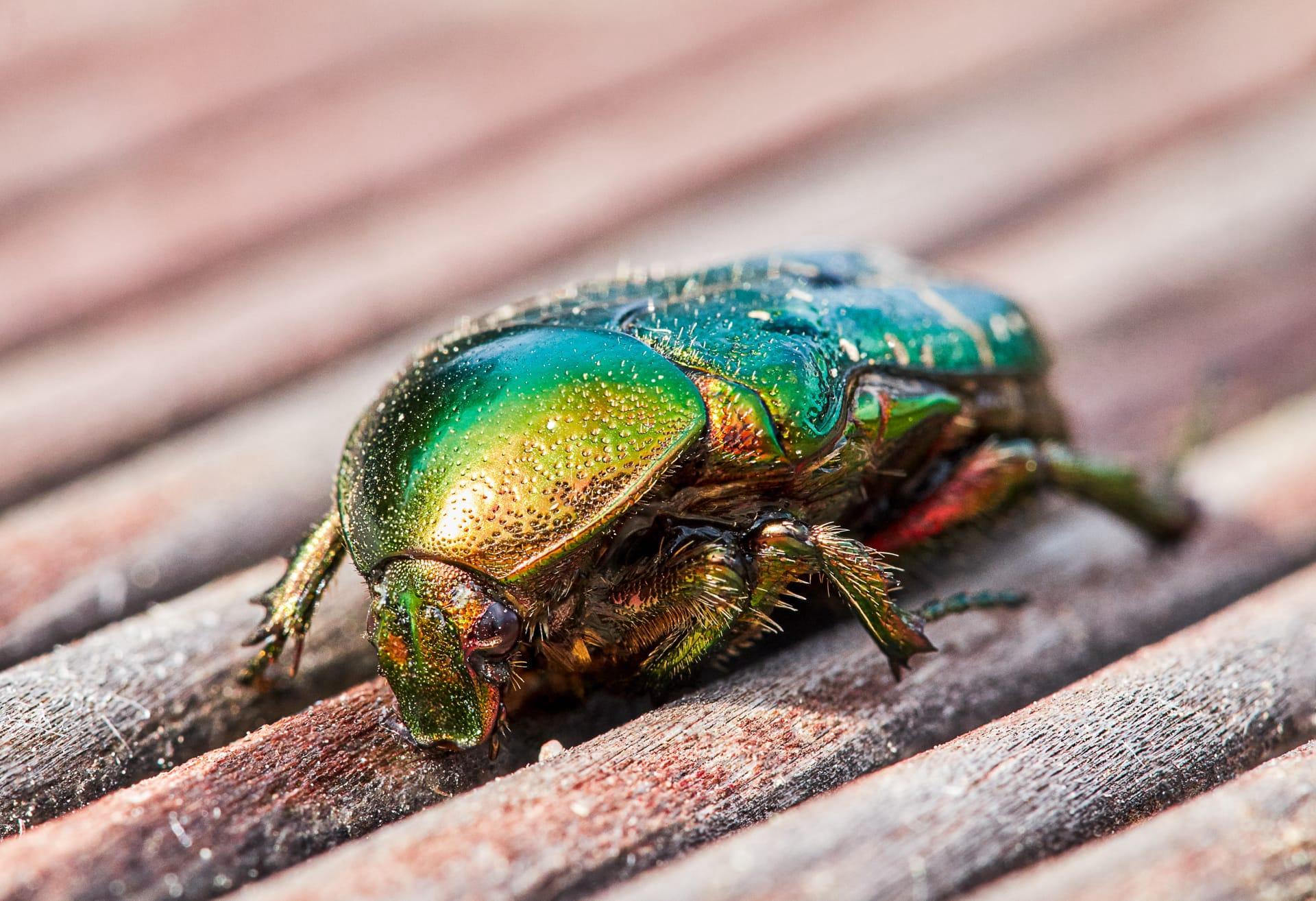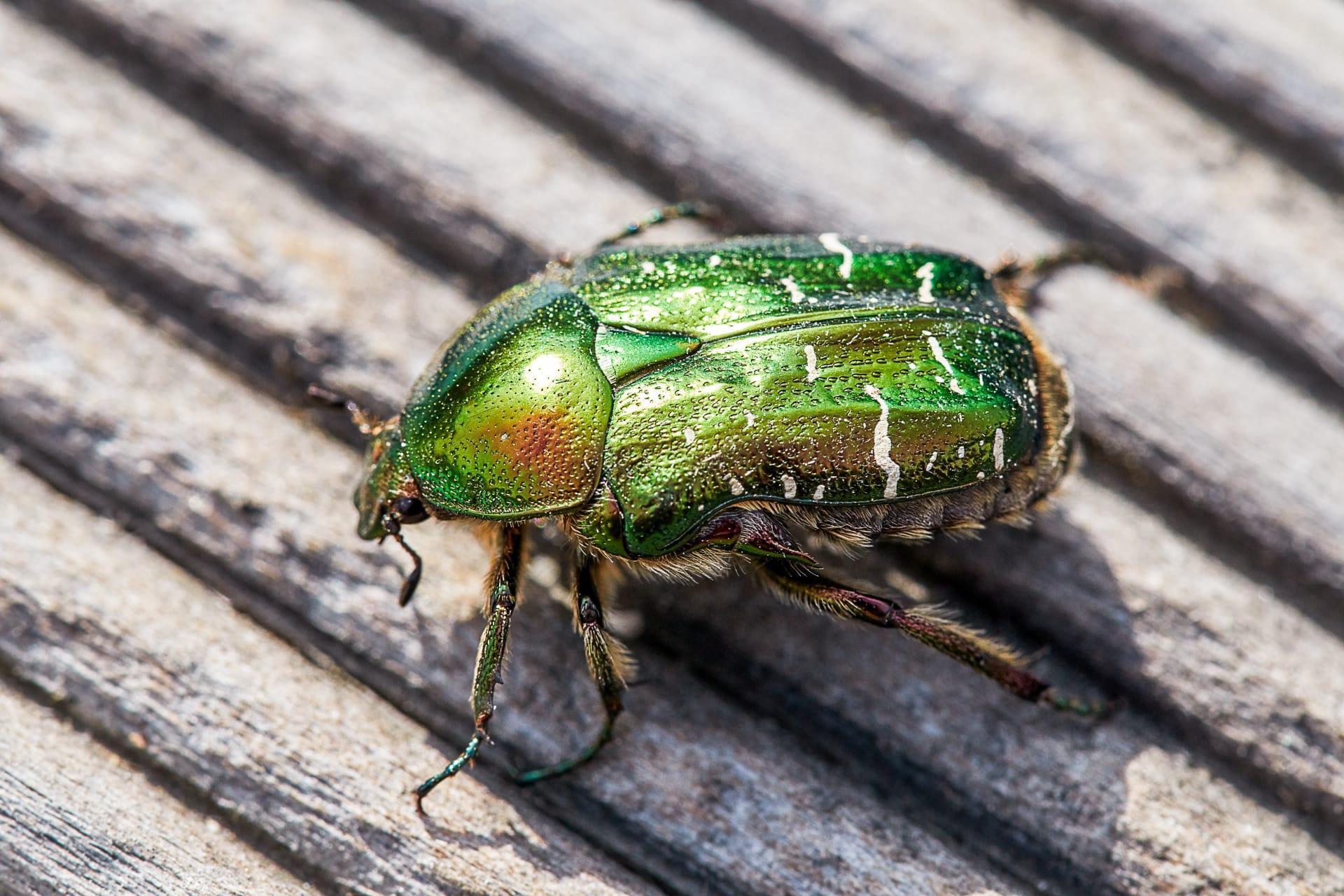Green June Beetle
- Home /
- Mini Encyclopedia /
- Animal /
- Green June Beetle
1
The Green June Beetle, scientifically known as Cotinis nitida, belongs to the family Scarabaeidae, which includes over 30,000 species of beetles worldwide. This species is classified under the genus Cotinis, characterized by their robust body, metallic sheen, and distinctively clubbed antennae. The Green June Beetle stands out for its iridescent, emerald green coloring with occasional gold or brown hues, primarily on its elytra (wing covers). Adult beetles measure about 0.8 to 1 inch in length, showcasing a notable size difference between males and females, with females generally larger.
Geographically, the Green June Beetle is native to North America, predominantly found in the eastern United States. Their habitat extends from the Midwest to the East Coast, with a noticeable concentration in states like Missouri, Georgia, and Texas. These beetles thrive in environments where they have access to abundant vegetation and fruit, as they are primarily herbivorous. You'll often spot them in orchards, gardens, and fields, where they feed on ripe fruits and decaying organic matter. Their population peaks in the warmer months, especially from late June to August, hence the name "June" beetle.

2
Question: Do Green June Beetles bite or pose a threat to humans?
Answer: A common misconception about the Green June Beetle is its ability to bite or harm humans. In reality, these beetles are not aggressive towards humans and lack the mouthparts capable of biting or piercing human skin. Their primary defense mechanism is to play dead when threatened, curling up and remaining motionless. While their buzzing flight and large size may seem intimidating, they are essentially harmless. It's important to note that their larval stage, known as grubs, can cause damage to lawns and gardens by feeding on the roots of grasses and plants.

3
The survival strategies of the Green June Beetle are fascinating and quite effective. One key strategy is their reproductive cycle. Females lay their eggs in the soil during late summer, which hatch into grubs. These grubs live underground for almost a year, feeding on decaying organic matter and plant roots, before emerging as adults the following summer. This life cycle allows them to exploit different ecological niches and avoid competition.
Another survival strategy is their feeding habit. Adult Green June Beetles are diurnal, feeding primarily on ripe fruits and decaying vegetation during the day. This diurnal activity helps them avoid nocturnal predators. Moreover, their metallic green coloration provides a certain level of camouflage among leaves and grasses, aiding in their protection against predators like birds and small mammals.

4
In the ecosystem, Green June Beetles play a dual role. As decomposers, the larvae contribute significantly to soil health. By feeding on decaying organic matter and plant roots, they help in the breakdown and recycling of nutrients back into the soil. This process enhances soil fertility and structure, benefiting plant growth.
As part of the food chain, Green June Beetles serve as a food source for various predators. Birds, small mammals, and even other insects feed on both the adult beetles and the larvae. Their presence in an ecosystem indicates a healthy, balanced environment, where they contribute to both soil health and the sustenance of local fauna.

5
Film: "The Secret Life of Beetles," produced in the United States in 2018, explores the diverse world of beetles, including the Green June Beetle. This documentary delves into their life cycle, habitat, and ecological impact, showcasing stunning macro photography that brings the viewer up close to these often-overlooked insects.
Book: "Beetles of Eastern North America" by Arthur V. Evans, published in the United States in 2014, offers a comprehensive guide to over 1,500 species, including the Green June Beetle. This book, rich in photographs and detailed descriptions, serves as an invaluable resource for entomologists and nature enthusiasts alike.
Book: "Insects of the Eastern Forests" by Michael J. Raupp, published in the United States in 2016, provides an insightful look into the lives of various insects, including the Green June Beetle. Raupp's work is notable for its easy-to-understand language and practical information on insect behavior and identification, making it accessible to a broad audience.